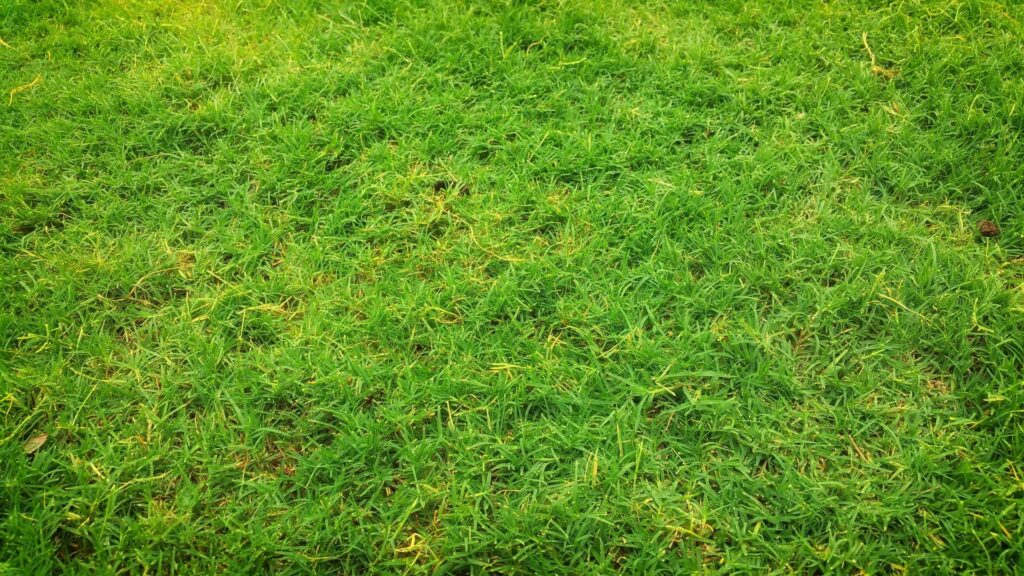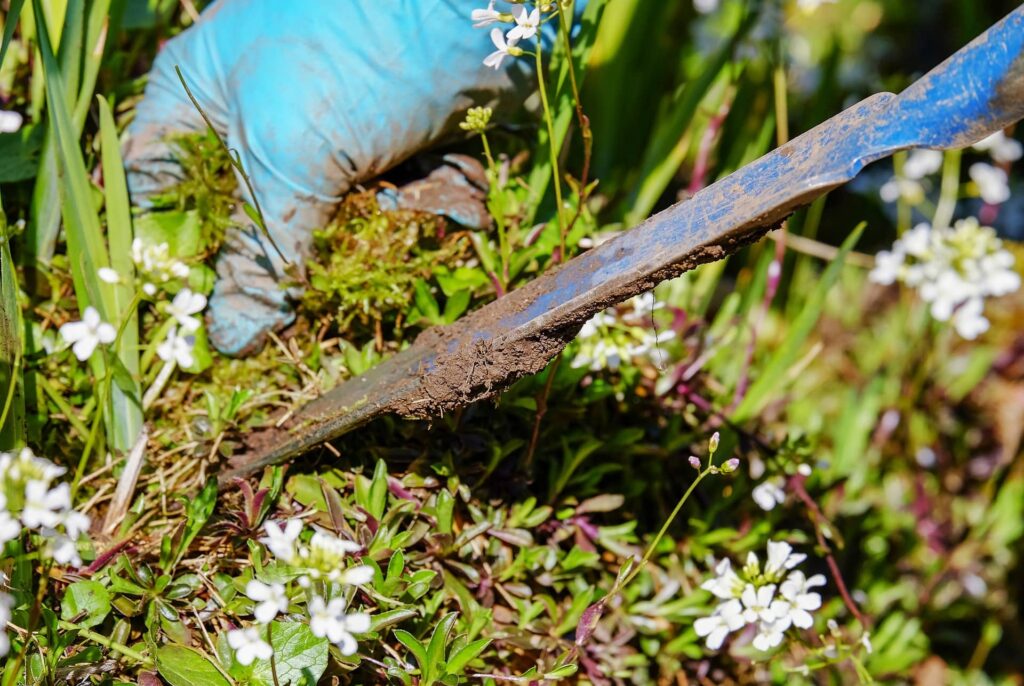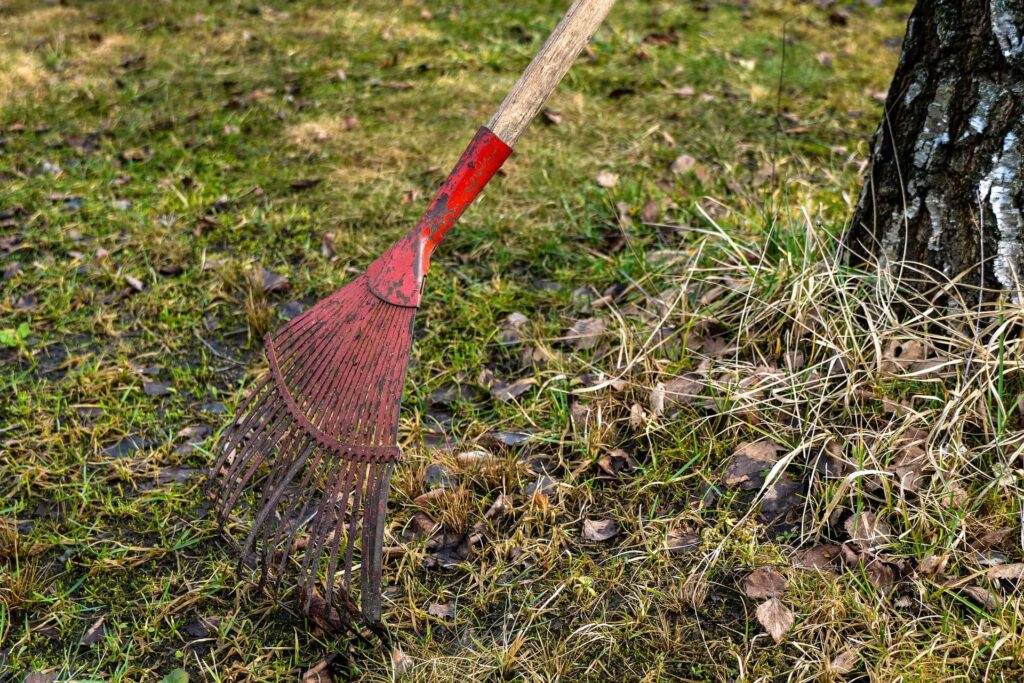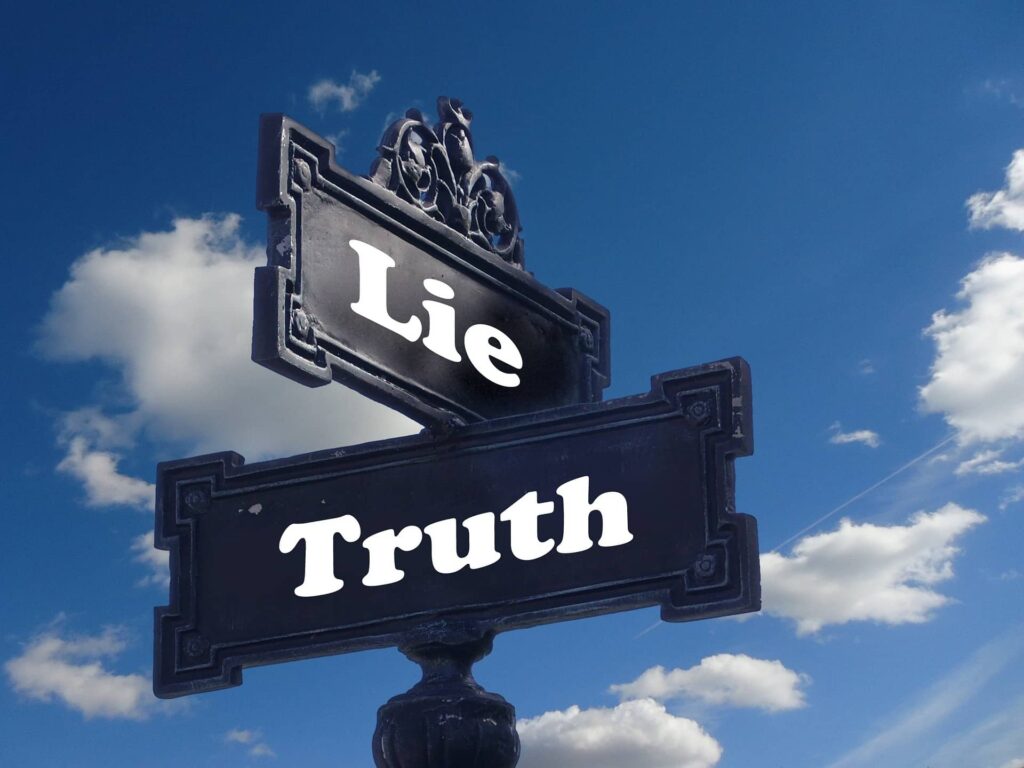Is your lawn care routine based on facts or fiction? Many homeowners unknowingly follow outdated or misguided practices when tending to their yards. In this comprehensive guide, we’ll cut through the confusion and expose the truth behind common lawn care myths. By understanding the science of turf grass management, you’ll be better equipped to cultivate a lush, healthy lawn that’s the envy of the neighborhood.
Introduction: Why Lawn Care Myths Can Hurt Your Yard
Misinformation about lawn care basics is as pervasive as crabgrass in a neglected yard. These myths can lead to wasted time, money, and even damage to your lawn. Our mission is to set the record straight, helping you achieve a thriving green oasis without falling prey to common misconceptions.
Lawn care myths often arise from oversimplified advice or outdated practices. As lawn care experts continue to research and refine best practices, it’s crucial to stay informed about the latest findings in turf grass management. By debunking these myths, we’ll empower you to make informed decisions about your lawn’s health and appearance.
Are you following the facts or myths when it comes to lawn care?
Before we dive into specific myths, let’s consider how misinformation can impact your lawn care routine. Many homeowners unknowingly follow practices that:
- Wastewater and increase utility bills
- Damage grass blades and root systems
- Encourage weed growth and pest infestations
- Lead to unnecessary chemical use
- Result in an unhealthy, unattractive lawn
By questioning conventional wisdom and embracing evidence-based lawn care practices and keeping some essential lawn care tools on hand, you can save time, money, and effort while achieving better results.
Watering Myths: Quenching Your Lawn’s Thirst

Myth #1: More Water Means a Healthier Lawn
One of the most persistent lawn care myths is that frequent, shallow watering is best for your grass. In reality, overwatering can be just as harmful as underwatering. Excessive moisture can lead to:
- Shallow root growth
- Increased susceptibility to disease
- Soil compaction
- Nutrient runoff
Instead, focus on deep, infrequent watering to encourage strong root development. Here’s a simple guide to efficient watering:
- Water deeply (about 1 inch per session)
- Allow the soil to dry between waterings
- Water early in the morning to minimize evaporation
Signs of overwatering include:
- Fungal growth or mushrooms in the lawn
- Spongy feel when walking on the grass
- Standing water or puddles
- Yellowing grass blades
Myth #2: It’s Best to Water Your Lawn Every Day
Daily watering is not only unnecessary but can be detrimental to your lawn’s health. Frequent, shallow watering promotes weak, shallow root systems that are more susceptible to stress and disease.
Instead, create a watering schedule based on your grass type and climate. Most lawns benefit from 1-1.5 inches of water per week, either from rainfall or irrigation. Use a rain gauge or simple container to measure water output.
Consider using smart sprinkler systems or moisture sensors to optimize your watering routine. These technologies can help you save water and ensure your lawn receives adequate moisture without overdoing it.
Myth #3: It Doesn’t Matter What Time of Day You Water Your Grass
The timing of your watering can significantly impact its effectiveness and your lawn’s health. Watering at the wrong time can lead to water waste and increase the risk of fungal diseases.
Optimal watering times:
| Time of Day | Pros | Cons |
|---|---|---|
| Early Morning (4-10 AM) | Less evaporation, allows grass to dry before evening | May conflict with morning routines |
| Late Afternoon (4-6 PM) | Grass has time to dry before nightfall | Can interfere with outdoor activities |
| Night | Reduced evaporation | Increased risk of fungal growth |
Avoid watering during the hottest part of the day, as much of the water will evaporate before reaching the roots.
Mowing Myths: Cutting Through the Confusion
Myth #4: You Should Mow Your Lawn as Short as Possible
Many homeowners believe that cutting grass short will reduce the frequency of mowing. However, this practice, known as “scalping,” can severely damage your lawn. Mowing too short:
- Stresses the grass
- Exposes soil, promoting weed growth
- Reduces the lawn’s ability to photosynthesize
- Weakens the root system
Instead, follow the “one-third rule” of mowing: never remove more than one-third of the grass blade’s height in a single mowing session. This approach promotes healthier, more resilient turf.
Ideal mowing heights for common grass types:
- Kentucky Bluegrass: 2.5-3.5 inches
- Tall Fescue: 3-4 inches
- Bermuda Grass: 0.5-1.5 inches
- Zoysia: 0.5-1 inch
Myth #5: Cutting Grass Short Means You Don’t Have to Mow as Often
Counterintuitively, mowing your lawn shorter often leads to more frequent mowing. When grass is cut too short, it responds by growing more quickly to restore its optimal leaf surface area. This rapid growth means you’ll need to mow more often to maintain a tidy appearance.
Proper mowing frequency depends on your grass type, growing conditions, and desired lawn appearance. Generally, aim to mow when your grass reaches about 1/3 taller than its ideal height. For most lawns, this means mowing once or twice a week during the peak growing season.
Myth #6: Leaving Grass Clippings When Mowing Will Cause Thatch
Many homeowners believe that grass clippings contribute to thatch buildup, but this is a common misconception. Thatch is a layer of dead and living plant material that accumulates between the soil surface and the green grass blades. It’s primarily composed of roots, stems, and rhizomes – not grass clippings.
In fact, leaving grass clippings on your lawn (a practice known as “grasscycling”) can be beneficial:
- Provides natural fertilization (grass clippings are about 4% nitrogen)
- Reduces waste in landfills
- Conserves moisture in the soil
- Saves time and effort in bagging and disposing of clippings
To practice effective grasscycling:
- Mow when the grass is dry
- Use a sharp mower blade
- Mow frequently enough that you’re not removing more than 1/3 of the grass height
- If clippings are long, make a second pass to chop them finer
Soil and Aeration Myths: Getting to the Root of the Matter

Myth #7: Mechanical De-thatching is Required to Maintain a Healthy Lawn
While thatch can be problematic if it becomes too thick (more than 1/2 inch), most lawns don’t require regular mechanical de-thatching. Excessive thatch is often a symptom of other lawn care issues, such as overwatering, over-fertilization, or improper mowing.
Natural thatch management techniques:
- Maintain proper soil pH (6.0-7.0 for most grasses)
- Avoid overwatering and over-fertilizing
- Encourage beneficial microorganisms through organic matter addition
- Core aerate annually or as needed
Mechanical de-thatching should be a last resort, used only when thatch exceeds 3/4 inch in thickness.
Myth #8: Wearing Spiked Shoes on Your Grass Will Repair Compact Soil
The idea of aerating your lawn by walking around in spiked shoes might seem appealing, but it’s largely ineffective. Spike aeration creates narrow holes that quickly close up, doing little to alleviate soil compaction.
For proper aeration, use a core aerator that removes plugs of soil from the lawn. This process:
- Reduces soil compaction
- Improves air, water, and nutrient penetration
- Enhances root growth
- Helps break down thatch
Aerate your lawn annually or as needed, typically in the fall for cool-season grasses and late spring for warm-season grasses.
Fertilizer and Seeding Myths: Nourishing Your Lawn Wisely
Myth #9: Fertilizers Are Always Good for Your Grass
While fertilizers play a crucial role in lawn health, the adage “if some is good, more is better” doesn’t apply here. Over-fertilization can lead to:
- Rapid, weak growth
- Increased susceptibility to pests and diseases
- Environmental pollution through runoff
- “Fertilizer burn” that damages or kills grass
To fertilize effectively:
- Conduct a soil test to determine your lawn’s specific needs
- Choose a fertilizer with the appropriate N-P-K (Nitrogen-Phosphorus-Potassium) ratio
- Follow application rates carefully
- Time applications based on your grass type and growing season
Sample fertilization schedule for cool-season grasses:
| Season | Fertilizer Type | Application Rate |
|---|---|---|
| Early Spring | Balanced (e.g., 10-10-10) | 1 lb N/1000 sq ft |
| Late Spring | High Nitrogen (e.g., 32-0-4) | 1 lb N/1000 sq ft |
| Early Fall | Balanced (e.g., 10-10-10) | 1 lb N/1000 sq ft |
| Late Fall | Winterizer (e.g., 32-0-10) | 1 lb N/1000 sq ft |
Myth #10: Spring is the Best Time to Seed Bare or Thin Areas of Your Lawn
While spring seeding can be successful, fall is generally the optimal time for overseeding cool-season grasses. Fall seeding offers several advantages:
- Cooler temperatures and increased rainfall
- Less competition from weeds
- More time for grass to establish before summer heat stress
For warm-season grasses, late spring to early summer is typically best for seeding.
When overseeding:
- Choose a grass seed that matches your existing lawn or is suitable for your climate
- Prepare the soil by raking and removing debris
- Apply seed evenly using a spreader
- Keep the seeded area consistently moist until germination
- Avoid heavy foot traffic on newly seeded areas
By dispelling these common lawn care myths, you’re now equipped with the knowledge to make informed decisions about your lawn’s health. Remember, every lawn is unique, and what works for one may not work for another. Pay attention to your grass’s specific needs, and don’t be afraid to adjust your approach as you learn more about your lawn’s preferences.
Implementing these evidence-based practices will help you cultivate a lush, healthy lawn that’s resilient to pests, diseases, and environmental stresses. With patience and proper care, you’ll be well on your way to achieving the green oasis you’ve always dreamed of.
Weed and Pest Control Myths: Battling the Unwanted Guests

Myth #11: All Weeds Are Bad and Must Be Eliminated
While a perfectly manicured, weed-free lawn might be the ideal for some, it’s important to understand that not all weeds are detrimental to your lawn’s health. In fact, some “weeds” can actually benefit your yard’s ecosystem.
Benefits of certain weeds:
- Clover: Fixes nitrogen in the soil, improving grass nutrition
- Dandelions: Deep taproots aerate soil and bring up nutrients
- Plantain: Attracts beneficial insects and can indicate soil compaction
Instead of waging all-out war on weeds, consider an integrated approach:
- Maintain a healthy, dense lawn to naturally crowd out weeds
- Hand-pull isolated weeds before they spread
- Use targeted, spot treatments for problem areas
- Embrace some biodiversity in your lawn
Myth #12: Chemical Herbicides Are the Best Way to Control Weeds & Crabgrass
While chemical herbicides can be effective, they’re not always the best or safest option for weed control. Overuse of herbicides can lead to:
- Environmental pollution
- Harm to beneficial insects and soil microorganisms
- Development of herbicide-resistant weeds
- Potential health risks for humans and pets
Instead, consider an Integrated Pest Management (IPM) approach:
- Prevention: Maintain a healthy lawn through proper mowing, watering, and fertilization
- Cultural controls: Overseed to crowd out weeds, improve soil health
- Mechanical controls: Hand-pulling, hoeing, or using weed removal tools
- Biological controls: Introduce natural predators or competing plants
- Chemical controls: Use as a last resort, and opt for selective, low-toxicity options
For crabgrass specifically:
- Apply pre-emergent herbicides in early spring before soil temperatures reach 55°F
- Maintain proper mowing height to shade soil and prevent crabgrass germination
- Water deeply but infrequently to encourage deep grass root growth
Myth #13: Hand-Pulling is the Best Way to Stop Weeds
While hand-pulling can be effective for small weed infestations, it’s not always the most efficient or successful method for weed control. Some considerations:
Pros of hand-pulling:
- Immediate results
- No chemical use
- Can be effective for annual weeds
Cons of hand-pulling:
- Time-consuming for large areas
- May not remove entire root system of perennial weeds
- Can disturb soil and bring weed seeds to the surface
For optimal weed control, combine hand-pulling with other methods:
- Use proper tools (e.g., dandelion diggers) to remove entire root systems
- Apply mulch or pre-emergent herbicides after pulling to prevent new weeds
- Reseed bare spots promptly to prevent weed reinfestation
Seasonal Care Myths: Year-Round Lawn Maintenance
Myth #14: Fall is the Time to Stop Caring for Your Lawn
Many homeowners mistakenly believe that lawn care ends with summer. In reality, fall is a crucial time for lawn maintenance, especially for cool-season grasses. Proper fall care sets the stage for a healthy lawn come spring.
Key fall lawn care tasks:
- Fertilization: Apply a winterizer fertilizer high in potassium to promote root growth and cold hardiness
- Aeration: Relieve soil compaction and improve nutrient penetration
- Overseeding: Ideal time for cool-season grass establishment
- Leaf management: Remove or mulch leaves to prevent smothering
- Weed control: Target perennial weeds as they store nutrients for winter
| Fall Task | Timing | Benefits |
|---|---|---|
| Fertilization | 6-8 weeks before first frost | Strengthens roots, improves spring green-up |
| Aeration | Early to mid-fall | Reduces compaction, enhances water and nutrient uptake |
| Overseeding | 45 days before first frost | Fills in bare spots, improves lawn density |
| Leaf removal | Ongoing | Prevents grass suffocation, reduces disease risk |
Myth #15: You Have to Rake All Leaves to Avoid Smothering Your Lawn
While it’s true that a thick layer of leaves can smother your lawn, complete leaf removal isn’t always necessary or beneficial. A moderate amount of leaves can actually improve your soil health:
- Leaves provide organic matter as they decompose
- They can suppress weed growth
- Leaf litter supports beneficial insects and microorganisms
Instead of raking and bagging all leaves, consider these alternatives:
- Mulch mowing: Use a mulching mower to chop leaves into small pieces that can decompose into the lawn
- Leaf composting: Create a separate pile to compost leaves for future use as a natural fertilizer
- Strategic removal: Remove leaves from areas where they’re too thick, leaving a light layer elsewhere
Aim to keep leaf coverage to less than 20% of your lawn’s surface to balance the benefits with potential drawbacks.
Grass Type Myths: Not All Lawns Are Created Equal
Myth #16: All Grass Types Need the Same Care
One of the biggest mistakes in lawn care is treating all grass types the same. Cool-season and warm-season grasses have very different needs and growth patterns.
Cool-season grasses (e.g., Kentucky bluegrass, fescue):
- Thrive in temperatures between 60-75°F
- Grow most actively in spring and fall
- Require more water in summer to prevent dormancy
Warm-season grasses (e.g., Bermuda grass, zoysia):
- Prefer temperatures between 80-95°F
- Grow most actively in late spring through summer
- Can tolerate drought and heat better than cool-season grasses
To tailor your lawn care routine:
- Identify your grass type
- Adjust mowing heights seasonally (higher in summer for cool-season, lower for warm-season)
- Time fertilization based on peak growth periods
- Adapt watering schedules to grass type and climate
Myth #17: Grass Is Grass – It’s All the Same
Different grass species have unique characteristics that affect their care requirements and suitability for various climates and uses. Understanding your specific grass type is crucial for proper lawn maintenance.
Popular grass types and their characteristics:
| Grass Type | Climate | Drought Tolerance | Shade Tolerance | Wear Resistance |
|---|---|---|---|---|
| Kentucky Bluegrass | Cool | Low | Low | High |
| Tall Fescue | Cool/Transition | Moderate | Moderate | Moderate |
| Bermuda Grass | Warm | High | Low | High |
| Zoysia | Warm/Transition | High | Moderate | High |
When choosing grass for your lawn, consider:
- Your local climate and microclimate
- Soil type and pH
- Sun exposure in your yard
- Intended use (e.g., high traffic, ornamental)
By understanding and catering to your specific grass type, you can create a lawn care routine that promotes optimal health and appearance.
Fertilizer and Nutrient Management Myths: Feeding Your Lawn Wisely
Myth #18: You Only Need to Fertilize Once or Twice a Year to Have a Healthy Lawn
While it’s true that some lawns can thrive with minimal fertilization, most benefit from a more balanced approach to nutrient management. The idea that a single application of fertilizer can sustain your lawn year-round oversimplifies the complex nutritional needs of grass.
Factors affecting fertilization needs:
- Grass type (cool-season vs. warm-season)
- Soil composition and pH
- Climate and rainfall
- Lawn use intensity
A more effective fertilization strategy involves multiple applications throughout the growing season, tailored to your specific grass type and local conditions.
Sample fertilization schedule for cool-season grasses:
| Season | Timing | Type of Fertilizer | Purpose |
|---|---|---|---|
| Early Spring | When grass starts growing | Balanced (e.g., 16-4-8) | Promote initial green-up |
| Late Spring | Before summer heat | Slow-release nitrogen | Support growth without excess |
| Early Fall | As temperatures cool | High nitrogen | Encourage robust growth |
| Late Fall | Before dormancy | Winterizer (high K) | Improve winter hardiness |
Myth #19: Lawn Fertilizer is Bad for the Environment
While improper use of fertilizers can indeed harm the environment, responsible application can actually benefit ecosystems. The key is to use fertilizers judiciously and follow best practices.
Environmental benefits of a well-fertilized lawn:
- Increased carbon sequestration
- Improved soil health and structure
- Reduced soil erosion
- Enhanced water filtration
To minimize environmental impact:
- Use slow-release fertilizers to reduce nutrient runoff
- Apply fertilizer based on soil test results to avoid over-application
- Never fertilize before heavy rain to prevent water pollution
- Consider organic fertilizers or compost for a more sustainable approach
Case Study: Chesapeake Bay Watershed
In the 1990s, excessive fertilizer use contributed to water quality issues in the Chesapeake Bay. Through education and improved practices, homeowners and professionals have significantly reduced nutrient runoff while maintaining healthy lawns.
- 30% reduction in nitrogen runoff since 2000
- 50% decrease in phosphorus use on lawns
- Improved water clarity and ecosystem health
This case demonstrates that with proper management, lawn care and environmental stewardship can go hand in hand.
Thatch and Soil Health Myths: Understanding Your Lawn’s Foundation

Myth #20: Having Thatch in My Lawn is Always Bad
Thatch, the layer of dead and living organic matter between the soil surface and green vegetation, is often misunderstood. While excessive thatch can be problematic, a moderate layer (less than 1/2 inch) is actually beneficial for your lawn.
Benefits of a thin thatch layer:
- Insulates soil from temperature extremes
- Retains moisture
- Provides a cushion to reduce compaction
- Harbors beneficial microorganisms
Thatch becomes an issue when it exceeds 3/4 inch in thickness. Excessive thatch can:
- Impede water and nutrient penetration
- Harbor pests and diseases
- Reduce the lawn’s resilience to stress
To manage thatch effectively:
- Maintain proper soil pH (6.0-7.0 for most grasses)
- Avoid over-fertilization and overwatering
- Regularly core aerate to improve soil structure
- Consider top-dressing with compost to introduce beneficial microbes
Myth #21: Spiked Shoes Will Aerate Your Lawn
The idea of aerating your lawn by simply walking around in spiked shoes sounds appealing, but it’s largely ineffective. While spike aeration does create holes in the soil, it doesn’t address the root causes of soil compaction.
Why spike aeration falls short:
- Creates narrow holes that quickly close up
- Doesn’t remove soil cores, leading to further compaction around the holes
- Fails to significantly improve air, water, and nutrient penetration
For effective aeration, use a core aerator that removes plugs of soil. This process:
- Reduces soil compaction
- Improves root zone aeration
- Enhances water and nutrient uptake
- Helps break down thatch
Best practices for core aeration:
- Aerate when soil is moist but not saturated
- Make multiple passes in different directions
- Leave soil cores on the lawn to break down naturally
- Follow up with overseeding and fertilization for best results
Watering Wisdom: Hydrating Your Lawn Effectively
Myth #22: A Garden Hose Is More Cost-Efficient Than Installing a Sprinkler System
While using a garden hose might seem more economical upfront, it’s often less efficient and more time-consuming in the long run. A well-designed irrigation system can save water, time, and money.
Comparison of watering methods:
| Method | Pros | Cons |
|---|---|---|
| Garden Hose | Low initial cost, Flexible | Time-consuming, Uneven coverage, Potential overwatering |
| Sprinkler System | Consistent coverage, Water-saving features, Time-saving | Higher upfront cost, Professional installation recommended |
Modern sprinkler systems offer features that improve efficiency:
- Smart controllers that adjust to weather conditions
- Drip irrigation for targeted watering
- Rain sensors to prevent unnecessary watering
- Zone-specific programming for varied landscape needs
Long-term cost analysis: Consider a 2,000 sq ft lawn:
- Manual watering: 2 hours per week at $15/hour labor = $1,560/year
- Automated system: $3,000 installation, $100/year maintenance
- Break-even point: Approximately 2 years
While the initial investment in a sprinkler system may be higher, the long-term savings in water usage and time often make it more cost-effective.
Seasonal Lawn Care: Adapting to Nature’s Rhythm
Myth #23: Spring is the Best Time to Start a New Lawn Program
While spring brings renewed growth and enthusiasm for lawn care, it’s not always the ideal time to start a comprehensive lawn program. This myth overlooks the unique benefits of fall lawn care, especially for cool-season grasses.
Advantages of fall lawn care:
- Cooler temperatures reduce stress on grass
- Increased rainfall supports root development
- Less competition from weeds
- Ideal conditions for overseeding and aeration
A year-round approach to lawn care yields the best results. Here’s a seasonal breakdown:
| Season | Key Tasks |
|---|---|
| Spring | Light fertilization, pre-emergent weed control, mowing height adjustment |
| Summer | Heat stress management, proper watering, pest control |
| Fall | Core aeration, overseeding, winterizer fertilization, leaf management |
| Winter | Equipment maintenance, snow mold prevention, limit foot traffic |
To transition to a year-round lawn care program:
- Assess your lawn’s current condition
- Identify your grass type and its specific needs
- Create a calendar of tasks based on your local climate
- Adjust your approach as you observe your lawn’s response
Myth #24: You Have to Rake Your Leaves
The idea that every leaf must be removed from your lawn is not only time-consuming but can also deprive your soil of valuable nutrients. While a thick layer of leaves can indeed smother grass, a moderate amount can be beneficial.
Benefits of leaving some leaves:
- Provide organic matter as they decompose
- Offer shelter for beneficial insects
- Suppress weed growth
- Reduce the need for chemical fertilizers
Instead of raking all leaves, consider these alternatives:
- Mulch mowing: Use a mulching mower to chop leaves into small pieces that can decompose into the lawn. Aim for pieces smaller than dime-size.
- Leaf composting: Create a separate pile to compost leaves for use as a natural fertilizer next season.
- Strategic removal: Remove leaves from areas where they’re too thick, leaving a light layer elsewhere.
Leaf management best practices:
- Mulch leaves when they’re dry to prevent clumping
- Maintain leaf coverage at less than 20% of your lawn’s surface
- Continue mowing as needed, even if just to mulch leaves
By adapting your leaf management strategy, you can save time and enhance your soil’s health naturally.
Grass Type Specifics: Tailoring Care to Your Turf
Myth #25: All Grass Types Need the Same Care
One of the most pervasive myths in lawn care is that all grasses have the same needs. In reality, different grass species have unique requirements for mowing, watering, and fertilization.
Cool-season vs. Warm-season Grasses:
| Characteristic | Cool-season Grasses | Warm-season Grasses |
|---|---|---|
| Optimal Growth | 60-75°F | 80-95°F |
| Peak Season | Spring and Fall | Late Spring to Summer |
| Water Needs | Higher in summer | More drought-tolerant |
| Fertilization | Spring and Fall | Late Spring to Early Fall |
| Winter Color | Often remain green | May go dormant (brown) |
Specific care tips for common grass types:
- Kentucky Bluegrass (Cool-season)
- Mowing height: 2.5-3.5 inches
- Water needs: 1-1.5 inches per week
- Fertilization: 4 lbs N/1000 sq ft per year
- Tall Fescue (Cool-season)
- Mowing height: 3-4 inches
- Water needs: 1-1.25 inches per week
- Fertilization: 2-3 lbs N/1000 sq ft per year
- Bermuda Grass (Warm-season)
- Mowing height: 0.5-1.5 inches
- Water needs: 1-1.25 inches per week
- Fertilization: 4-6 lbs N/1000 sq ft per year
- Zoysia (Warm-season)
- Mowing height: 0.5-1 inch
- Water needs: 1 inch per week
- Fertilization: 2-3 lbs N/1000 sq ft per year
To provide optimal care for your lawn:
- Identify your grass type(s)
- Adjust your mowing height seasonally
- Tailor your watering schedule to grass type and local climate
- Time fertilization based on your grass’s peak growth periods
Conclusion: Embracing Evidence-Based Lawn Care
As we’ve explored these common lawn care myths, it’s clear that many traditional practices are outdated or misguided. By embracing evidence-based approaches to lawn management, you can:
- Conserve water and reduce utility costs
- Minimize chemical use and environmental impact
- Save time and effort on unnecessary tasks
- Promote a healthier, more resilient lawn ecosystem
Remember, lawn care is not one-size-fits-all. Be prepared to adjust your approach based on:
- Your specific grass type
- Local climate and soil conditions
- Changing seasons and weather patterns
- Your lawn’s unique needs and challenges
By staying informed and adapting your lawn care practices, you’ll be well on your way to achieving a lush, healthy lawn that’s both beautiful and sustainable.
Your Action Plan for a Healthier Lawn
- Understand the fundamentals of lawn care terminology.
- Identify your grass type and research its specific needs
- Conduct a soil test to understand your lawn’s nutritional requirements
- Adjust your mowing height and frequency based on grass type and season
- Develop a watering schedule that promotes deep root growth
- Implement integrated pest management for weed and pest control
- Plan for year-round lawn care, including fall maintenance
- Monitor your lawn’s health and be prepared to adjust your practices as needed
By following these evidence-based practices and staying attentive to your lawn’s needs, you’ll be well-equipped to debunk common lawn care myths and cultivate a thriving, resilient green space that you can enjoy year-round.


